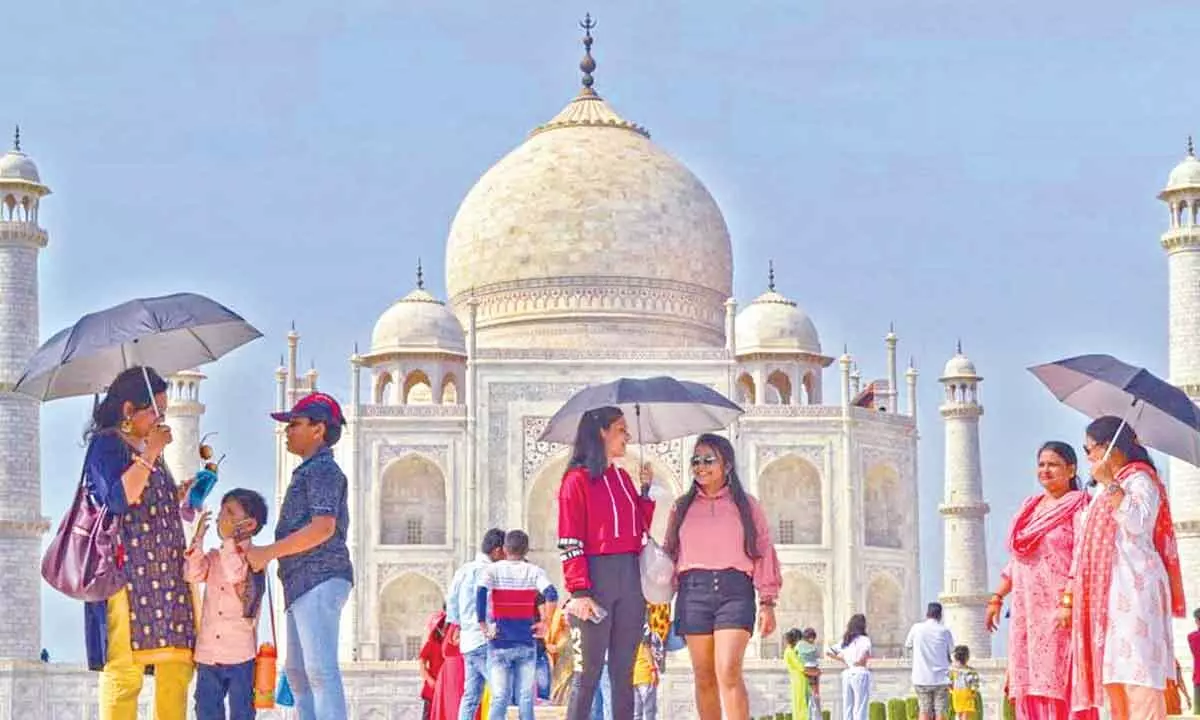How India can accelerate domestic tourism recovery
The sector, say industry experts, continues to grapple with poor service standards, safety and hygiene issues, low level investment in marketing and promotion
image for illustrative purpose

In the year 2019, Indian received 11million inbound tourists. It also includes people visiting friends and families here. India has 1 per cent share in international tourist market in pre-Covid period.
Regular International flights have already started. The industry has to ensure that the whole industry is fully vaccinated on priority basis. That sends a sound message that whoever is attending a tourist at airport or elsewhere is fully vaccinated.
India's achievement in improving connectivity in recent years would come very handy now when the world is bouncing back, and tourism is reopening. India has 140 airports, 20 of them have capacity for international take-off and landing. The country has second largest network of roads after the US as about 36 km roads are constructed every single day.
As far as inbound tourism is concerned, October onwards 30 to 40 per cent business of what we had in the pre-Covid times would come to India, say industry experts. However, cost of tour packages for India post Covid-19 has grown up by 25 to 30 per cent because of increase in fuel prices, transport cost and hotel rates have gone up. Domestic flights in India are costly. India should bring Aviation Turbine Fuel (ATF) under GST so that cost of ATF comes down.
Domestic tourism
Pre-Covid the number of domestic tourist visits in Indian is around 2.3 billion which is almost one-and-half visits per person making India the second highest market for domestic visits. But when compared with the US and China, the number of visits per person was almost six for US citizens and almost four for the Chinese domestic visits. While number of domestic tourists in India is high, the value and average expenditure by tourist is low.
To seize the day, the government as well as the industry will need to rise to the challenge of transforming top-20 Indian destinations as world-class tourist attractions. This requires an integrated, inter-sectoral approach and investment from the government to build supporting infrastructure and stellar service and customer experience from the industry that can propel domestic tourism in India like never before.
Indian tourist, visiting a domestic destination has high opportunity cost and that is killing domestic tourism. It is important to improve service standards for domestic tourism. Currently, it is important to focus on tourism that is sustainable.
There are many destinations in the states that are often off the tourism radar but have high tourism potential and can be developed through Centre and States funding and help diversify a state's tourism offerings.
Malaysia announced the opening of its border on April 1, earlier this year after imposing a little over two years of strict restrictions on international travel. In just about a fortnight, the Malaysia tourism was in India conducting a six-city road show to build confidence amongst the trade and travellers, sending a message on safety and its Covid preparedness, to re-engage with the trade on new product updates and education, and importantly, to also tell that it understand that the pandemic was devastating for the trade and industry and hence is willing to hand hold the trade with joints collaborative marketing initiatives and incentives.
On the other hand, some of the leading players in the Malaysian tourism industry, like for example the integrated Resort destination Desaru Coast, have also put on the table some attractive 'incentives' scheme to make it even more attractive for the Indian outbound tourism trade, especially the likes of MICE operators and wedding planners, to promote Malaysia in the Indian market. There is a lot we can learn here.
Similarly, given India's strategic and inherent advantages, domestic tourism is tremendous opportunity. However, there are issues that need to be addressed and challenges that need to be ironed out in order to exploit the potential opportunities that the sector offers in India. The sector, say industry experts, continues to grapple with poor service standards, safety and hygiene issues, low level investment in marketing and promotion and lack of funding for many promising and potential sites.
India is a unique country and so it cannot just copy a promotional strategy from anyone, but it can learn and imbibe good practices in destination marketing and promotion. The country should work on short, medium and long-term clear objectives and persist with well-crafted strategies for the source market developments.

